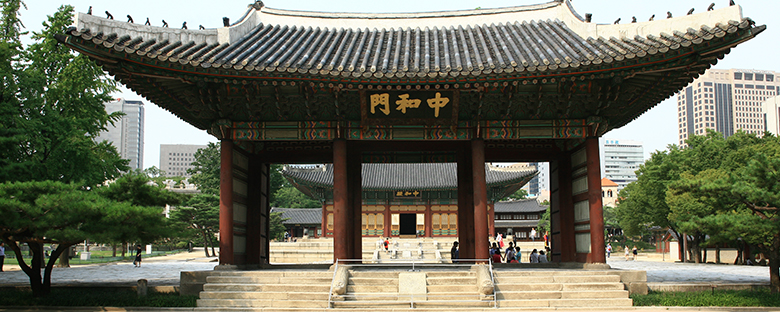
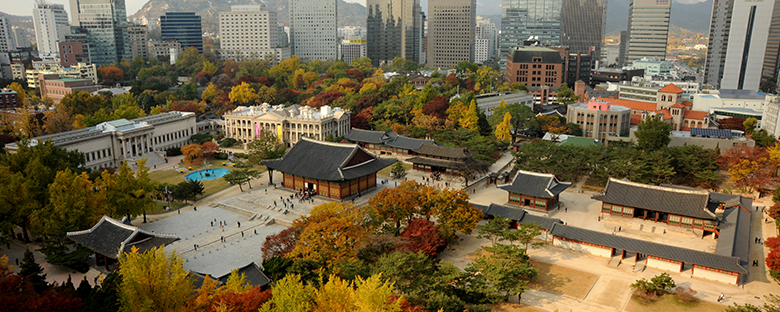
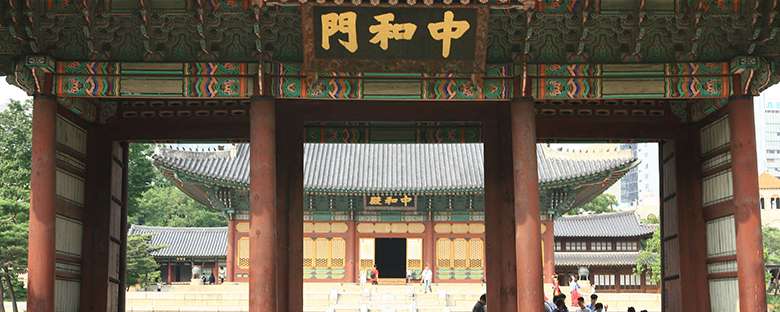
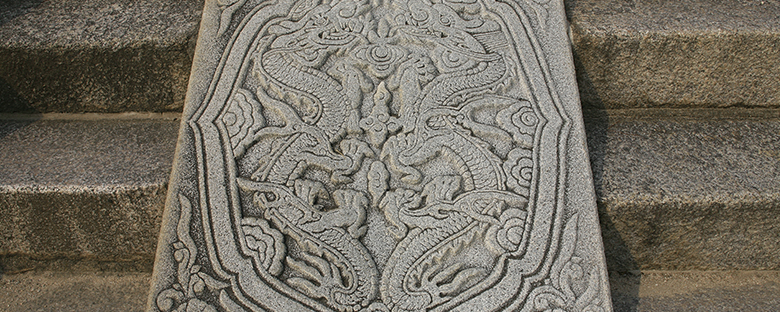
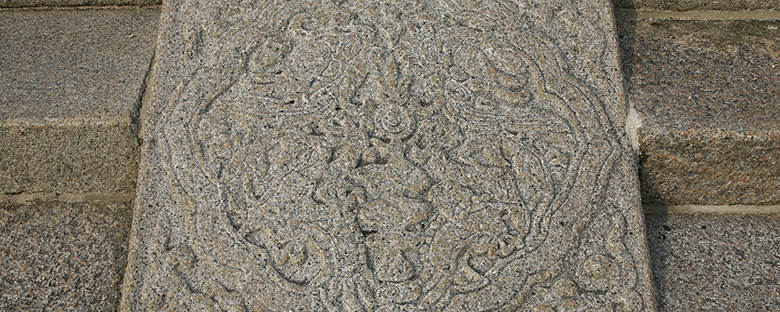
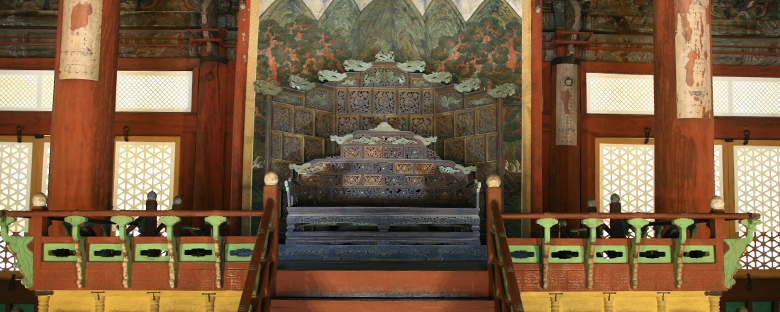
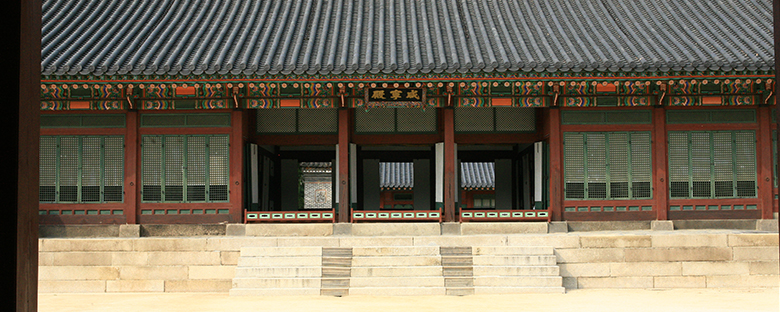
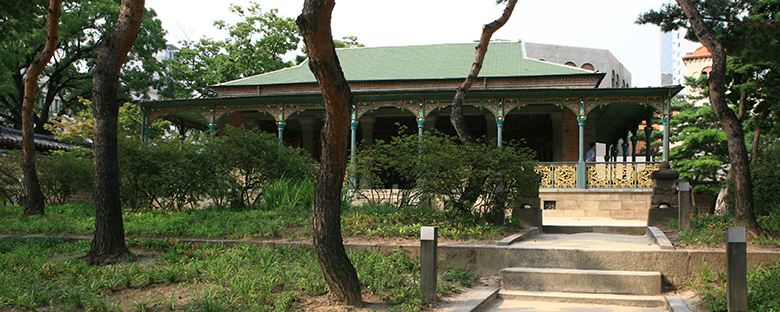
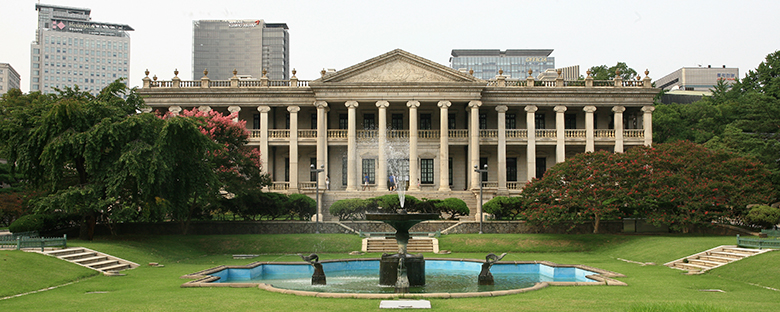
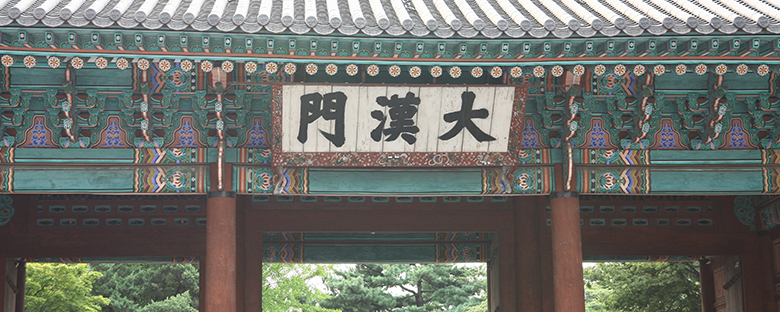
교육자료실
‘왕의시(御製詩)’ 가이드북-Guidebook for the Kings’ Poetry-15
春日方和暢(춘일방화창)
苑中花發紅(원중화발홍)
一天分造化(일천분조화)
萬物動仁風(만물동인풍)
봄 날씨 바야흐로 화창하여
정원의 꽃들이 붉게 피었네.
천지가 조화롭게 짜였으니
어진 교화로 만물을 다스려야지.
The spring weather is sunny
The flowers in the garden are red.
Heaven and earth were harmoniously arranged.
I will govern everything through good edification.
제목 : 上苑春景(상원춘경 : 상원의 봄 경치)
작자 : 고종황제
해설 : 고종 2년(1865), 만 열세 살 때에 창덕궁 후원(後苑)에서 봄 풍경을 감상하고 지은 시이다. 상원(上苑)은 천자(天子)의 정원을 뜻하는 말인데, 여기서는 창덕궁의 후원(後苑)을 가리킨다. 전반부에서 자연을 묘사하고 후반부에서 작자의 정서나 의지를 드러내는 한시의 전통적인 작법을 ‘선경후정(先景後情)’이라 하는데, 이 시는 그러한 전통에 충실한 작품이다. 안정된 국가의 기틀 위에서 어진 정치로 백성을 교화하고자 하는 포부를 드러내고 있다. 인풍(仁風)은 어진 덕으로 백성을 교화하는 것을 뜻한다.
Title : Sangwon Chunkyung (: The Court's Spring View)
Author: The Emperor Gojong, the 26th King of Joseon Kingdom and the First Emperor of the Dae-Han Empire (1864~1907)
Commentary : This poetry was written in the second year of the King Gojong (1865), when he was at the age of thirteen, while he was watching the Spring scenery in Changdeok Palace. The Sangwon refers to the garden of the Son of God and this Sangwon here refers to the back garden of Changdeokgung.
In the latter half of this poetry reveals the emotions and will of the author, while the former totally depicts the beauty of nature. This is the traditional work of Han-si, which depicts nature in the first half and reveals the emotions and will of the author in the latter half, that is so-called 'Sunkyeong Whokyeong'. This poetry reveals the aspiration to cultivate the people with good politics based on a stable state framework. It means to cultivate the people with virtue.





